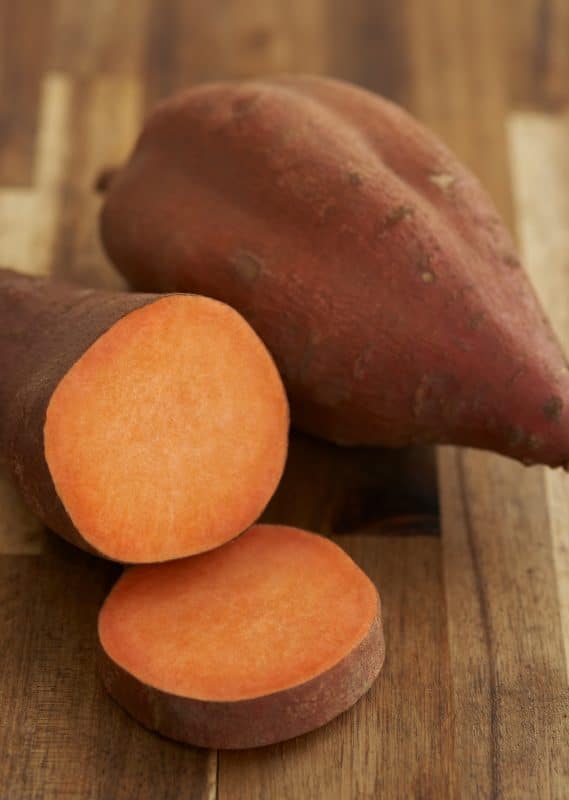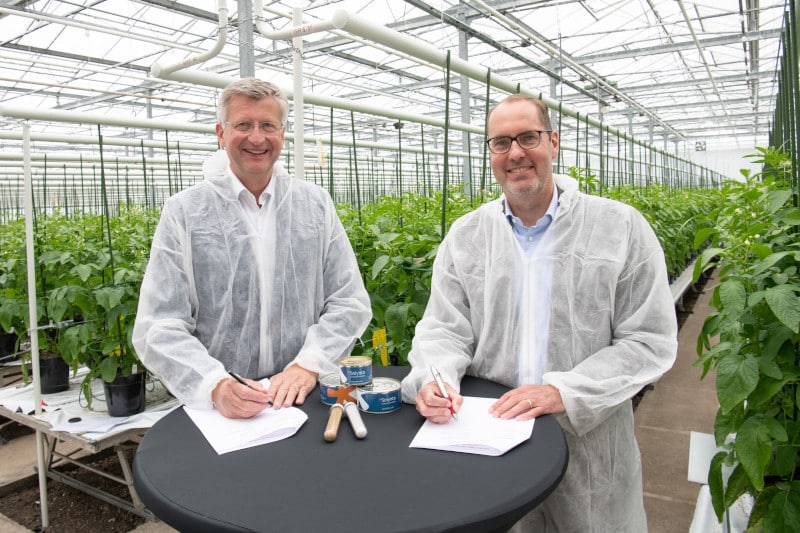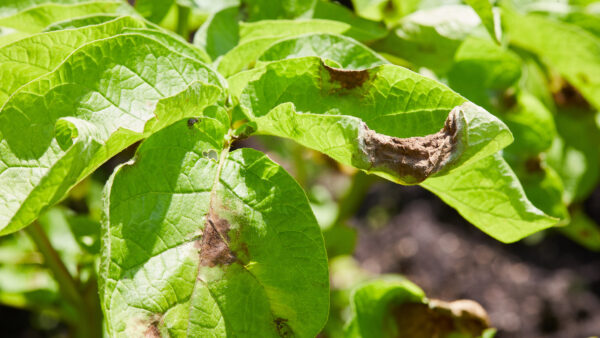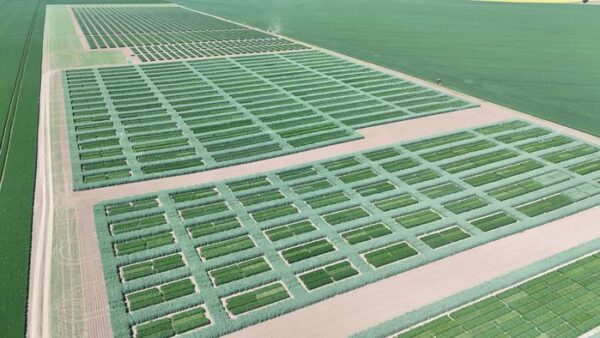Sweet potato has its centre of origin in the tropical regions of the Americas but is now mainly produced in Africa. According to FAO data, after China, most production takes place in Nigeria, Tanzania, Uganda and Ethiopia.
In Europe, sweet potatoes are part of a trending demand for exotic and ethnic food. The consumption of sweet potatoes has more than doubled over the past five years. In 2016, Europe imported 229,000 tonnes of sweet potatoes, compared to 81,000 in 2012. Sweet potatoes have gained much popularity thanks to a strong promotion in Europe, especially by North American producers, and supermarkets catering to this trend.
New variety
A new sweet potato variety developed in Canada called Radiance is now ready for commercial release in 2019. Breeding efforts have tailored it to suit the country’s growing season and conditions. The variety is currently being trialed from coast-to-coast and should be appearing in Canadian grocery stores next year. And the interesting thing is, there are already requests from Europe to grow the variety over there.
Valerio Primomo, a research scientist and vegetable breeder at Ontario-based Vineland Research and Innovation Centre, developed the variety with Canada’s unique growing conditions in mind, its shorter growing season being one.
Canadian growers typically cultivate Covington, a sweet potato variety commonly grown in the United States, Primomo says. However, Covington requires a long growing season in order for it to mature. As a result, harvest typically begins in October when the temperature begins to drop in Canada, making it difficult to avoid chilling injury. For this reason, Radiance is a big step forward, he says.
“We know that sweet potato is a Thanksgiving product, at least in the U.S. Now it’s a big thing in Canada. Retailers like Loblaws want to hit that market because they’ll sell a lot of it at that time of year,” says Primomo.
In the future, other producers around the world may be growing Radiance, says Vineland’s research director of applied genomics, Daryl Somers. Eventually, the variety will be tested in the United States as well as other countries.
“We do import a lot of sweet potato into this country, and now farmers are waking up to the idea they can produce Canadian-bred sweet potatoes, get them into the marketplace and into Canadian retail chains. We’re pretty optimistic Canadian consumers will recognize these are Canadian products grown in Canada. It makes a big difference to what they purchase,” says Somers.
“There are even requests from the EU to test a Canadian-developed sweet potato in their environments,” says Somers. Vineland, he says, is Canada’s first and only not-for-profit horticultural research centre, and actively seeks out research and business agreements and partnerships.
Production in Europe
In Europe, the attention to ethnic food and healthy nutrition have contributed to the popularity of sweet potatoes. The crop is mainly grown in Portugal, Spain, Italy and Greece. Portugal and Spain are the largest producers with around 20,000 to 25,000 tonnes.
The tubers have become conventional products in countries like the United Kingdom and the Netherlands. Both countries offer a fast-developing consumer market and the consumption in these leading countries is a promising sign for future growth in other European countries. The United Kingdom is a typical end use market, (re-)exporting much less than the Netherlands. In fact, they have become so popular in the United Kingdom that it has started to produce a British-grown variety. After trialling several varieties, the UK farmers have now zoomed in on a few that grow well under European conditions and match European taste buds. The sweet potatoes are grown in polythene-covered raised outdoor beds.
A large quantity of the sweet potatoes entering mainland Europe are traded through the Netherlands. The Netherlands offers an established trade route into Europe, and is the logical hub when growers want to supply to different countries in Europe. From here, sweet potato is distributed to countries such as Germany, France, Sweden, Finland as well as the United Kingdom.
Spain is increasing the production of sweet potatoes year by year. The country produces for both the domestic consumption and the supply to other European countries. The export volumes from Spain are lower in July and the beginning of August, when the last stocks are running out and quality is decreasing. Spanish producers are trying to achieve a guaranteed year-round supply by improving storage conditions. The Spanish import from other supplying countries is low, making it primarily attractive to external suppliers during times of shortage.
Export
Exporters from the United States have a major share of the supply to Europe. They have invested in varieties, quality storage and logistical processes, and are able to export throughout the year.
Sweet potatoes from the United States generally have orange flesh. Sweet potatoes with red skin and white flesh, exported to the European market, mainly come from Israel, Honduras, China and Egypt. The increasing demand in Europe has also provided opportunities to other suppliers. For example, Egypt has a price-competitive supply and a close logistics route through southern Europe. Honduras has worked on its international reputation and is increasing its year-round supply to Europe. Israel manages relatively high yields and successfully finds suitable supply windows into Europe. And last but not least, Senegal is an upcoming supplier to the European market.
DYK?
Did you know that the genome of cultivated sweet potatoes contains sequences of DNA from Agrobacterium, with the plants actively expressing these genes? Scientists found the transgenes both in the sweet potato’s closely related wild relatives, and in more distantly related wild species. This makes cultivated sweet potatoes the first known example of a naturally transgenic food crop.
Developed in Canada for Canadian Growers
Radiance is a new sweet potato variety suited to the Canadian growing season. Radiance was developed by Vineland Research and Innovation Centre and is said to thrive in Canadian growing conditions. Details include:
- 2019 commercial release
- Red-skinned variety with bright, rich orange flesh
- High-yielding, early season (118 –122 days)
- Scores high in consumer preference studies
- Agronomy trials are underway, including spacing recommendations, days to maturity and packout rate












